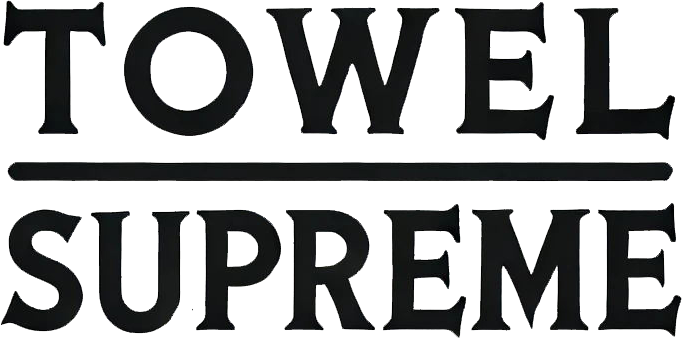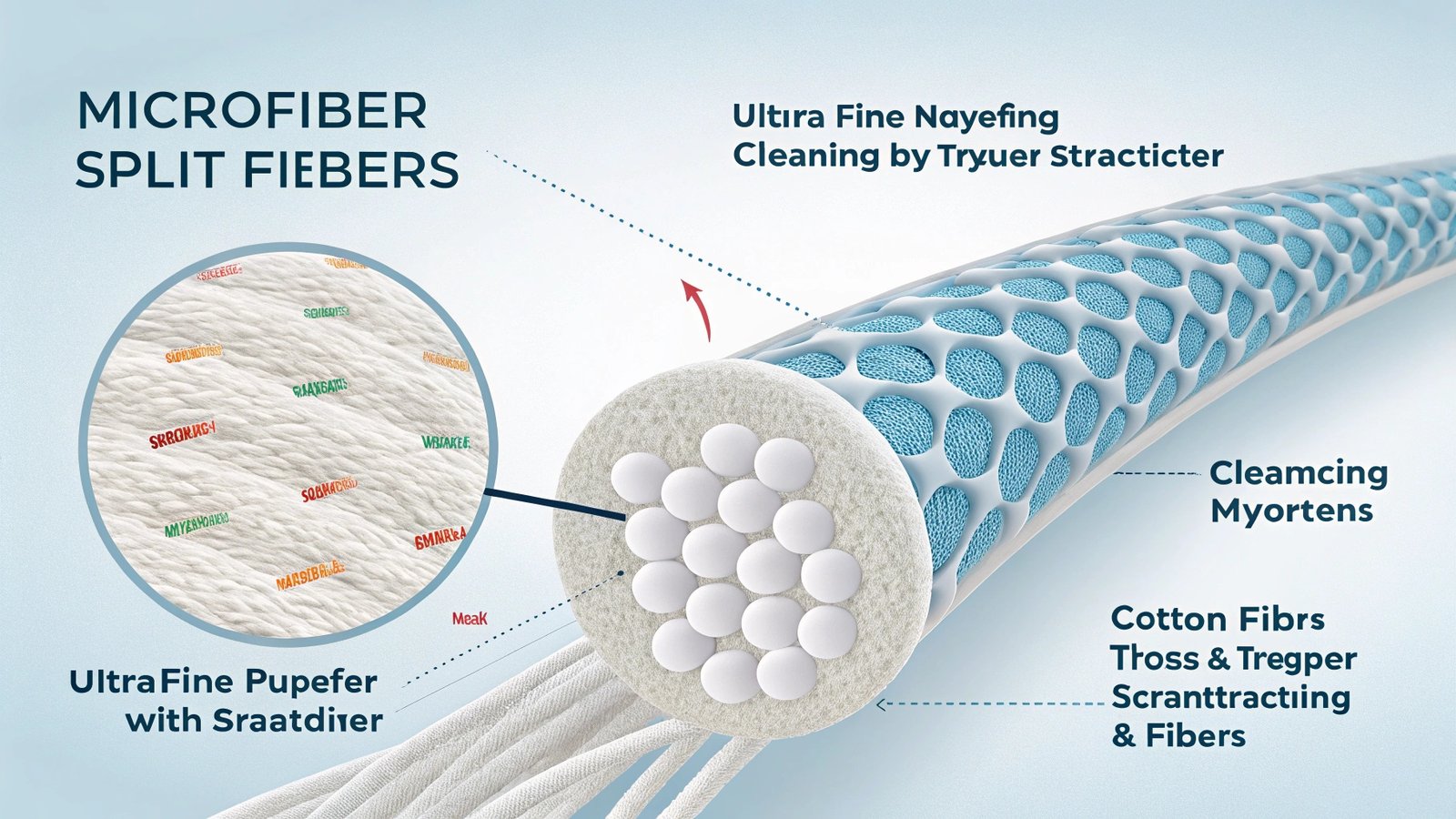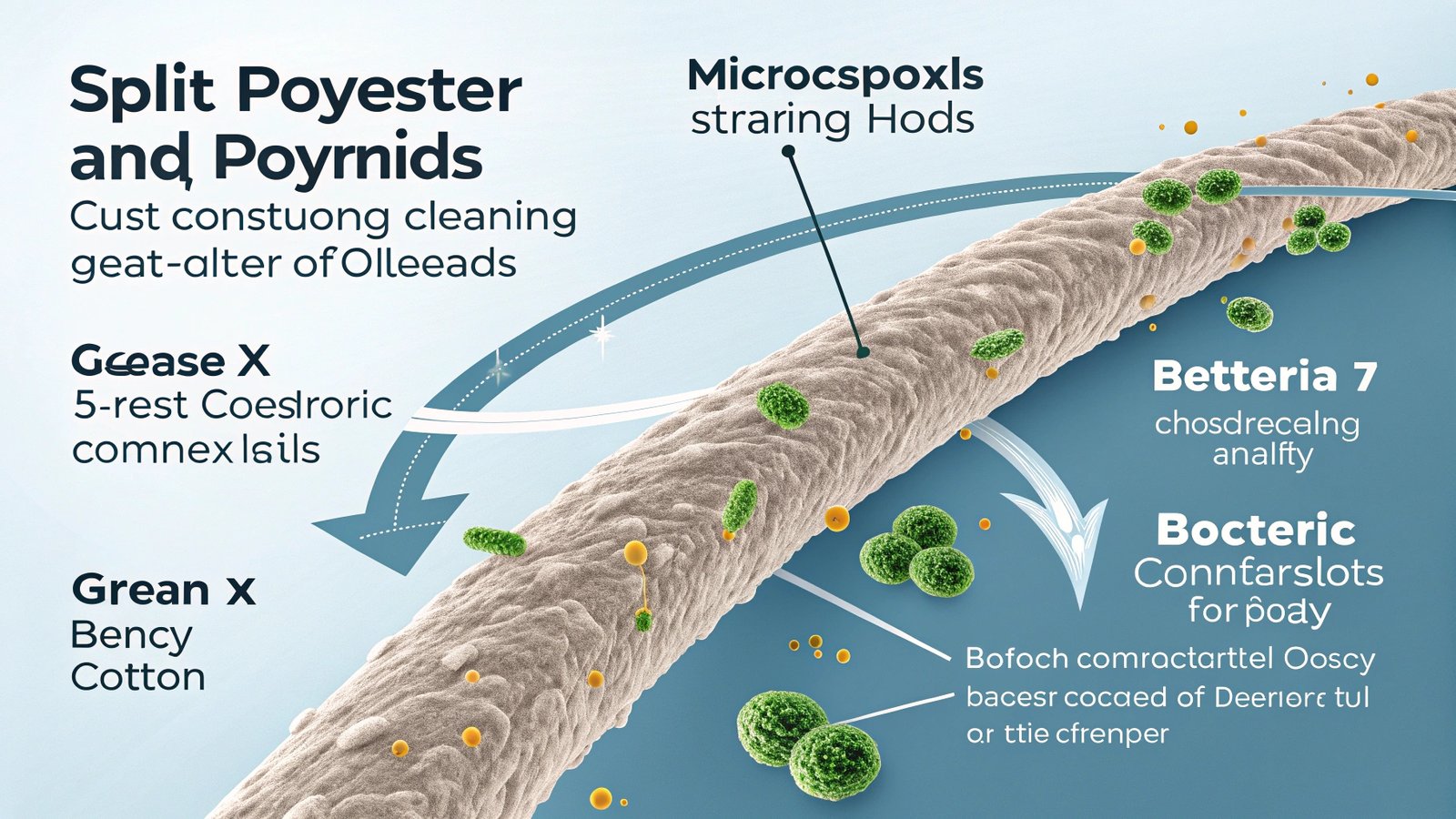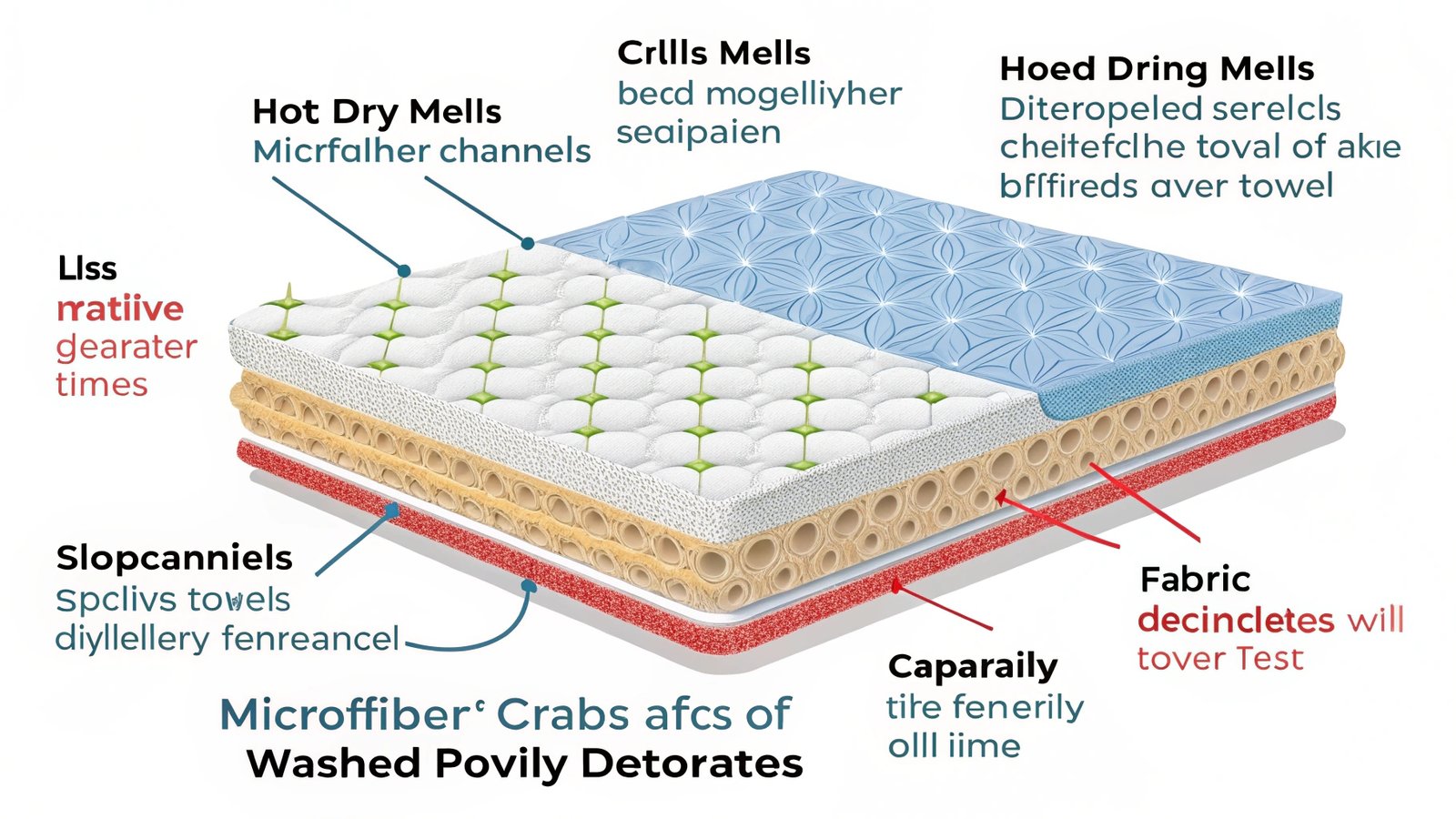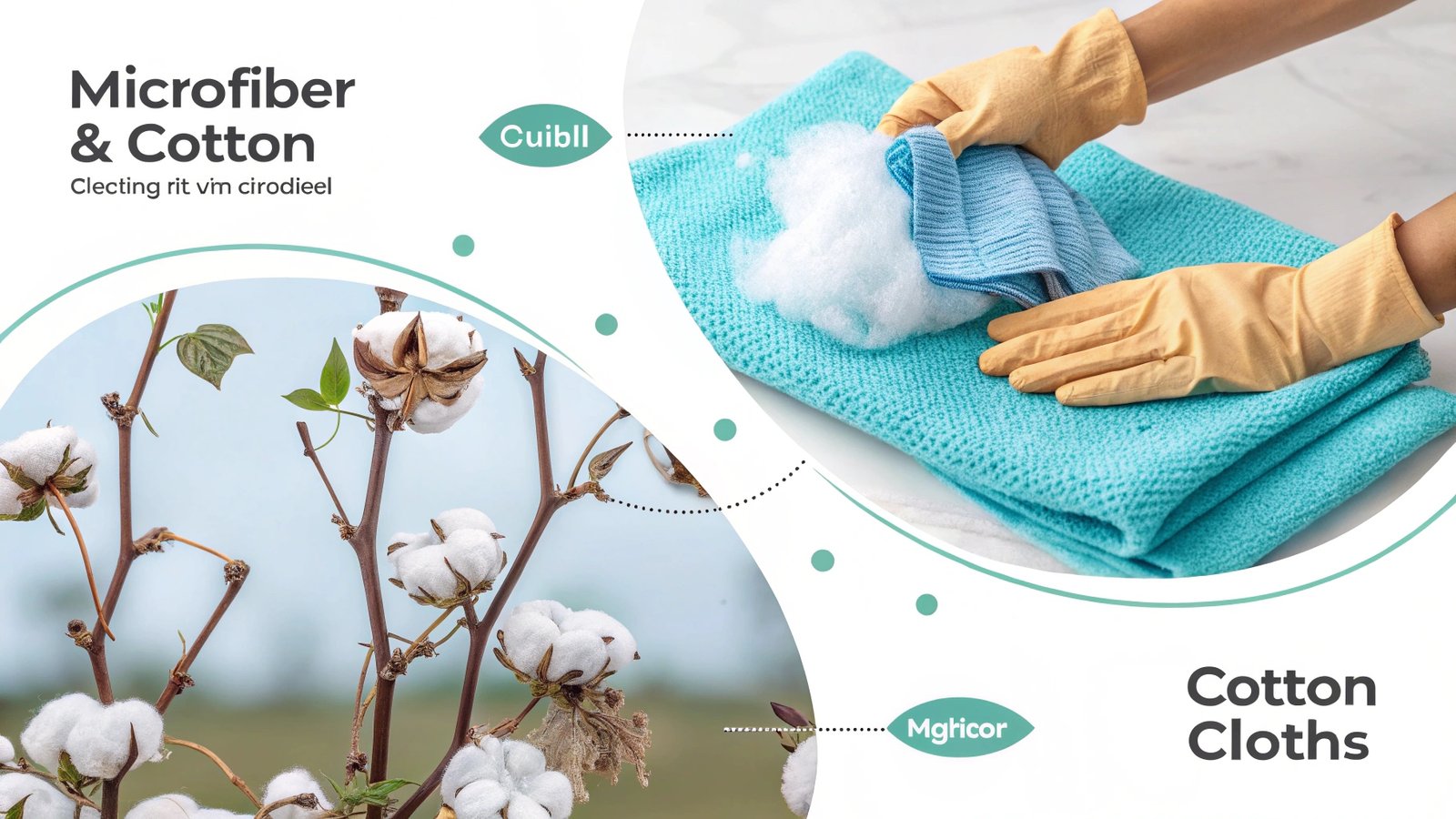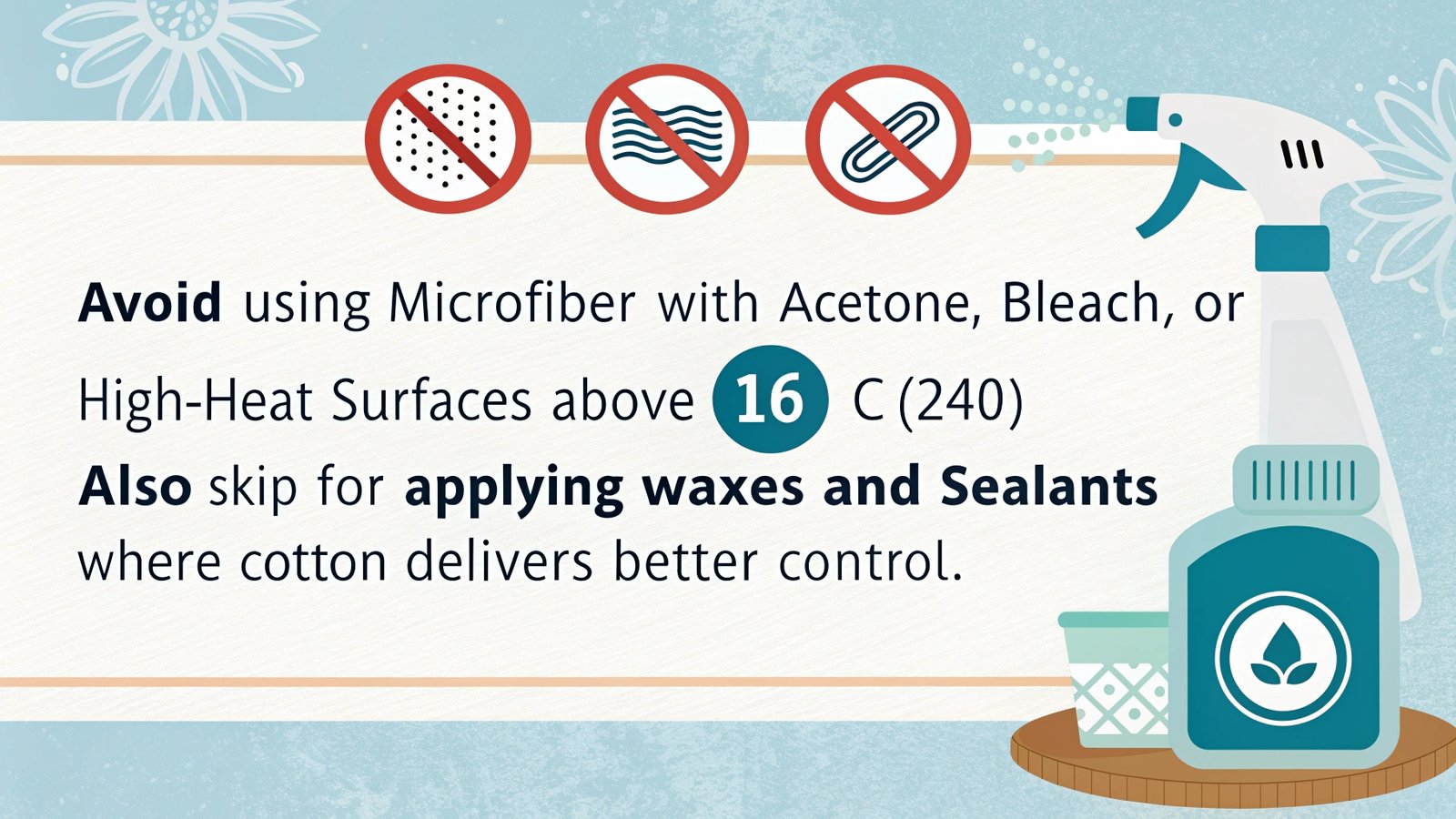Frustrated with lint-covered surfaces? Using regular cloths often spreads particles instead of trapping them. You end up cleaning repeatedly with mediocre results.
Microfiber excels through split fibers that trap particles 20x smaller than cotton can. These ultra-fine polyester strands create unmatched absorbency and cleaning power without scratching surfaces.
Discover why we've revolutionized towel production with microfiber technology. The benefits go far beyond basic cleaning - these fibers outperform traditional textiles.
What is so special about microfiber cloth?
Ever rinse a cloth to see dirty water run clean? Microfiber traps grime deep within its fibers instead of pushing it around like cotton rags do.
Split polyester/polyamide strands create microscopic hooks that grab dust, bacteria, and grease. This creates superior cleaning without chemicals, plus 7x more absorbency than cotton.
Microfiber's magic lies in its construction:
Fiber Engineering:
- Diameter: 1/100 human hair
- Cross-section: Star-shaped grooves
- Capillary channels: Trap liquids
- Electrostatic charge: Captures dust
| Performance Comparison: | Feature | Microfiber | Cotton | Synthetic Blends |
|---|---|---|---|---|
| Water absorbency | 7x own weight | 3x | 4.5x | |
| Dirt removal rate | 99% bacteria | 30% | 65% | |
| Scratch potential | Low (if quality) | Medium | High | |
| Chemical reliance | None needed | High | Medium | |
| Dry time | 50% faster | Slow | Moderate |
Key manufacturing insights:
- Our towels use 80/20 polyester/polyamide
- Split through unique hydrolysis process
- Heat-finished edges prevent shedding
- 350-450 GSM ideal for most applications
What are the disadvantages of microfiber?
Notice static cling attracting dust? Lower-grade microfiber generates electrostatic charges while struggling with oil removal.
Microfiber grabs oils poorly and deteriorates if washed improperly. Hot drying melts fibers while fabric softeners clog capillary channels, making towels less effective over time.
Understand these limitations to maximize value:
| Prevention Solutions: | Disadvantage | Cause | Prevention |
|---|---|---|---|
| Oil smearing | Hydrophobic properties | Pre-treat with degreaser | |
| Static buildup | Low humidity | Anti-static spray | |
| Fiber melting | High-temp washing | Cold water only 30°C (86°F) | |
| Reduced absorption | Softener residues | Vinegar rinse monthly | |
| Shorter lifespan | Heat drying | Air dry flat |
Maintenance rules we follow:
- Wash separately from lint producers
- Never bleach or use alkaline detergents
- Dry under shade - no direct sunlight
- Replace when texture flattens
- Store in open containers
Is microfiber better than cotton?
Tired of stiff, stained cotton rags? Microfiber outperforms cotton in scratch prevention, absorbency, and chemical-free cleaning for delicate surfaces like cars and electronics.
For polishing, liquid absorption, and hygienic cleaning, microfiber wins. Cotton works better for wax application and heavy scrubbing tasks requiring more aggressive friction.
Match tasks to textile strengths:
| Material Selection Guide: | Task | Microfiber Advantage | Cotton Advantage |
|---|---|---|---|
| Paint polishing | Superior scratch-free finish | Requires more pressure | |
| Liquid spills | Absorbs 7x faster | Absorbs 3x slower | |
| Medical cleaning | Bacterial removal 99% | Bacterial removal 62% | |
| Wax application | May over-spread product | Controlled product release | |
| Kitchen grease | Requires surfactant | Natural oil affinity |
Noteworthy exceptions:
- Automotive windows: Microfiber only
- Engine degreasing: Heavy cotton preferred
- Stainless steel: Dual-texture microfiber
- Dish drying: Linen outperforms both
What should you not use microfiber?
See foggy residue on eyeglasses? Using microfiber with certain chemicals damages fibers while leaving streaks on sensitive surfaces.
Avoid using microfiber with acetone, bleach, or high-heat surfaces above 116°C (240°F). Also skip for applying waxes and sealants where cotton delivers better control.
Learn where microfiber disappoints:
| Problem Surfaces: | Application | Microfiber Issue | Alternative |
|---|---|---|---|
| Car wax application | Over-spreads product | Foam applicator | |
| Bacon grease cleanup | Spreads oily mess | Paper towels | |
| Cast iron pans | Melts at high heat | Cotton towels | |
| Bleach disinfection | Fiber degradation | Sponges | |
| Fine silver polishing | May scratch | Lint-free cotton |
Important manufacturer insights:
- Polyamide fibers dissolve in solvent cleaners
- Glossy leather requires ultrasoft microfiber
- Wooden cutting boards need texture for scrubbing
- Microfiber lifts dust better from screens
- Use waffle weave for glass cleaning
Conclusion
Microfiber offers revolutionary cleaning power but has specific limitations. Choose based on task requirements for optimal surface care.
